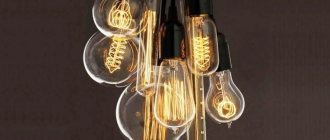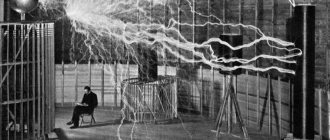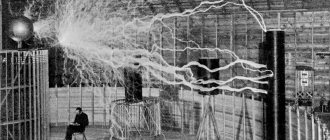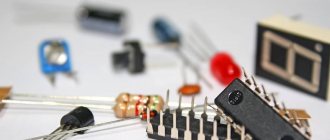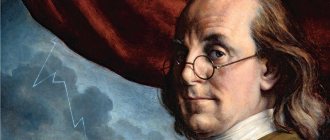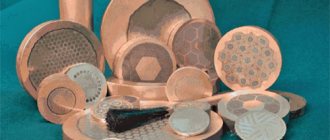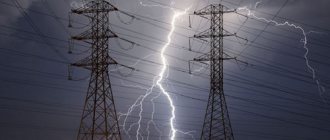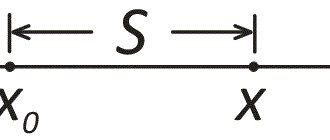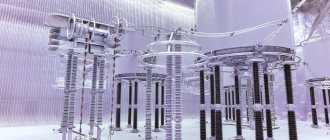Without a doubt, our lives would be completely different without the inventions of Thomas Alva Edison . This brilliant engineer changed the usual order of things in a most interesting way, filling our world with countless amazing devices created in his laboratory in New Jersey. However, have they all reached us? Ask anyone - all that remains from Edison are light bulbs. But that's not all.
Edison was born in Ohio in 1847 and received his first patent at the age of 22. The last patent to his credit appears two years after his death in 1933. In total, Edison patented 1,093 devices in the United States and 1,200 in other countries. Biographers note that Edison registered a new patent every two weeks throughout his working life. Even Apple would be jealous of such pressure. And although many of Edison’s inventions were not unique and he was constantly suing other engineers whose ideas he “borrowed,” Edison’s marketing skills and ability to influence people deserve respect.
Most of Edison's inventions can be divided into eight categories : batteries, electric lamps and power, records and sound recording, cement, mining, motion pictures, telegraphs and telephones. But although the “Wizard of Menlo Park” is remembered for his major inventions—the motion picture, the incandescent light bulb, and the phonograph—his tireless mind was constantly at work, generating new ideas that either did not catch on or were not accepted by the public. Some of them could take root today.
Electrographic voting
He was one of several inventors developing tools for legislative bodies such as the US Congress, which contributed to the creation of a system of convenient vote counting, as fashion and the times demanded. Edison's voting machine was a voting device connected to the clerk's desk. On the table were the names of congressional representatives, enclosed in metal columns with the inscriptions “yes” and “no”. The legislator would have to make his choice, after which an electrical signal would travel through wires to the clerk's desk. After the vote was completed, the clerk would place a chemically treated piece of paper on metal panels and run a roller over them. The chemicals on the paper had to react in the column where the signal was received. “Yes” and “no” determined the election results and the vote count.
Edison's friend, another telegraph operator named Dewitt Roberts, bought the rights to this device for $100 and took it to Washington. But Congress was unwilling to pass a device that would reduce voting time—thus leaving less time for conspirators and political schemers—so Edison's young voter went to the political graveyard.
What did Edison invent?
The brilliant American made the expression “It can be done better!” . He alone, then together with the workers of his laboratory, created a large number of new devices and improved inventions made by other people.
He was the first to add an aerophone and an election vote counter to his discoveries, but it was Edison who brought money and worldwide recognition:
- ticker machine;
- carbon telephone membrane;
- quadruplex telegraph;
- mimeograph;
- phonograph;
- carbon microphone;
- incandescent lamp with carbon filament;
- kinetoscope;
- electric chair;
- iron-nickel battery;
- fluoroscope;
- tazimeter;
- megaphone;
- pyromagnetic generator.
To spread electric lighting, he developed a screw lamp base, socket, socket, fuses, plug, and light switch. He is responsible for the formulation of cement mortar with rapid setting, increased fluidity, as well as the organization of the production of cheap cement, carbolic acid, phenol, benzene and other substances.
Pneumatic Stencil Pen
Edison became the creator of the ancestor of the tattoo machine - the pneumatic stencil pen.
This device was patented by Thomas Edison in 1876 and used a rod tipped with a steel needle to perforate printed paper. This pen was the first effective means for copying documents. In 1891, tattoo artist Samuel O'Reilly was the first to patent a tattoo machine, presumably based on an Edison pen. O'Reilly made only one such machine and used it for personal purposes. At least there is no record of him selling them.
O'Reilly immigrated to New York from Ireland in 1875. After developing his own tattoo machine, many circus performers and representatives of the entertainment industry became regulars at his house number 11 on Chatham Square. The machine worked faster than a normal tattooist's hand, and, as many thought, it gave a clean result. After O'Reilly's death in 1908, one of the master's students bought the machine and worked on Coney Island until the 50s.
Personal life
Over the years of his personal biography, Edison was married twice. His first wife was telegraph operator Mary Stillwell. An interesting fact is that immediately after the wedding the man got busy with work, forgetting about his wedding night.
In this union the couple had a daughter and two sons. The eldest children, Marriott and Thomas, with the light hand of their father, received the nicknames “Dot” and “Dash”, in honor of Morse code. Edison's wife died at the age of 29 from a brain tumor.
Thomas Edison with family
The inventor's second wife was a girl named Mina Miller. Edison taught her Morse code, declaring his love for her in this language. This union also produced two boys and one girl.
Magnetic iron ore separator
The idea Edison had from 1880 to 1890 was to use magnets to separate iron ore from unusable low-grade ores. Ideally, abandoned mines could become profitable due to the re-extraction of iron - then iron ore was worth fabulous money. Edison's laboratory was refurbished to develop these same separators and put them into practice. The inventor bought the rights to 145 abandoned mines and launched a pilot project at the Ogden Mine in New Jersey. Edison invested heavily in the project, partially sharing costs with the General Electric Company. However, technical problems in the operation of the separator were never resolved, and the price of iron ore fell, forcing Edison to stop developing an iron ore separator.
Childhood and youth
The future inventor was born on February 11, 1847 in the town of Milon, Ohio, into the family of a merchant and a schoolteacher. For a long time, neither parents nor teachers suspected that in a few decades little Thomas would radically change the usual way of life of Europeans and Americans. In early childhood, Edison did not get along with his studies. This was due not only to childhood restlessness, but also to health problems. Due to an incompletely cured infection, the boy began to lose his hearing. He had to leave school and study at home. Thomas's mother taught her son everything she knew, and also regularly bought the best books and textbooks for him.
In his free time from lessons, Thomas earned money by selling sweets and various small items. Quite early on, the boy began to demonstrate extraordinary commercial abilities; he managed to organize groups of the same boy traders and receive a portion of their proceeds. Then he began to conduct his first experiments in chemistry and physics.
As a teenager, Edison began working as a newspaper delivery boy. He got such a taste for the business that a couple of years later he even began publishing the first train newspaper for passengers. Perhaps Edison’s life would have turned out completely differently if not for one happy incident that happened to him in his youth. In the summer of 1862, Thomas saved a little boy who was nearly hit by a train. The father of the child turned out to be the head of the railway station, who, as a thank you, decided to teach the talented young man the telegraph business. Edison thoroughly studied the work of the telegraph, which allowed him to find a better-paying job. However, the inventor did not stay in one place for long.
In the period from 1863 to 1869, Edison traveled a lot around the country and changed several jobs, including the Western Union company that still exists today. All this time, he did not abandon his experiments and created several devices, which, however, did not find wide application. For example, potential customers rejected the electric vote-counting device that Edison created specifically for the American Parliament.
Electric meter
For example, providing electricity to businesses and homes. We need a way to determine how much customers are consuming so they can pay their bills fairly. Edison solved this problem by patenting the Webermeter in 1881. The Webermeter contained two or four electrolytic zinc batteries on both electrodes and zinc sulfate. Zinc was transferred from one electrode to another as electricity was used. After calculating the footage (by weighing the batteries), the batteries were changed.
First hired job
In 1859, young Thomas got a job as a newspaper delivery boy. During this period, he manages to earn up to $10 a day thanks to his extraordinary inventive thinking abilities. In 1862, he became the publisher of his own small newspaper for train passengers.
In August 1862, Edison saved the son of the head of one of the stations from a moving carriage. The boss offered to teach him telegraphy in gratitude. This is how he became acquainted with the telegraph. He immediately sets up his first telegraph line between his house and his friend’s house.
Fruit preservation method
In 1881, Edison patented a method for preserving fruits, vegetables and other organic foods in glass containers. Fruits and vegetables were placed in the jar, after which the air from the jar had to be pumped out. The glass tube was covered with another piece of glass. Another food-related invention, wax paper, is usually attributed to Edison, but it appeared in France as early as 1851, when Edison was still walking under the table. Edison used wax paper when recording sounds, maybe this is where history grew its legs.
Thomas Edison - the main startup founder of the 20th century
Thomas Alva Edison ( February 11, 1847, Mylene, Ohio - October 18, 1931, West Orange, New Jersey) was a world-famous American inventor and entrepreneur.
Edison received 1093 patents in the USA and about 3 thousand in other countries of the world. He improved the telegraph, telephone, and cinema equipment, developed one of the first commercially successful versions of the incandescent electric lamp, and invented the phonograph.
Edison spent his childhood and adolescence during the era of the Civil War, and his youth and youth during the formation and heyday of American oligarchic capitalism. Edison, along with others like Henry Ford, Alfred Sloan, and Joseph Kennedy, became one of those whose endeavors put an end to the era of Vanderbilt, Rockefeller, Morgan, and Carnegie.
In 1854, the Edison family moved to Michigan. Here Tom acquired his first private chemical laboratory, which he equipped in the basement of his parents’ house with money earned from peddling vegetables.
His passion for chemistry at home ran counter to his performance at school: as often happens with outstanding personalities, Tom Edison was considered dull in class. At the age of 15, Edison sold newspapers, and then began publishing his own newspaper, distributed throughout the Midwest by train. Despite the fact that the business was profitable, Edison refused to continue the business.
The reason for this was an episode in the spirit of his great contemporary, Mark Twain: one of the characters caricatured in the newspaper threatened the publisher and even threw him into an icy river. Journalism was too confrontational for the inventor. Edison became a telegraph operator.
Thomas Edison became a telegraph operator by accident: he saved the little son of the head of the local telegraph office from the wheels of a truck and was assigned a monetary job. Edison continued various experiments, now transferred from the field of pure chemistry to engineering. So he invented a device that continued to tap out a series of dots and dashes while the telegraph operator went about his business.
At the age of 21, Edison, after a period of wandering around the country from one job to another, came to Boston and got a job as a telegraph operator at Western Union. From there, he was fired for chemical experiments on the job and moved to New York, where he was hired by the Gold & Stock Telegraph for quickly being able to fix a complex malfunction in the telegraph apparatus. Here Edison made his first significant—and highly symbolic—invention: the “universal” stock exchange telegraph. For the patent for this device, Edison received $40,000 and with this money he opened his own manufactory for the production of the same stock exchange telegraphs in Newark.
Thomas Edison was not only a talented inventor, he understood very well what he could make money on at the end of the last century: science.
His laboratory in Menlo Park, which he opened in 1875, employed scientists who subsequently made significant discoveries in fundamental science (for example, the physicist Fleming), and applied scientists who achieved significant success on their own (for example, the German Schukkert, who founded concern "Siemens-Schuckert").
It is believed that the most important stage in the fate of Edison and his future brainchild - GE - was the discovery of the incandescent light bulb. This is not entirely true.
Leaving aside the question of whether Edison was the original inventor of the light bulb, it is important to understand that technological unity of production and the innovation chain were key to the creation of one of the companies that defined the face of the modern world economy.
From the point of view of entrepreneurship and industrial construction, the more significant side of Thomas Edison’s activity was not the talent of an inventor, but the genius of an improver and technologist.
And then to say: who, speaking about Edison, remembers the waxed wrapper for candies or a remedy for neuralgia that he invented? But, in addition to the light bulb, everyone knows that Edison developed an alternating current generator and made a significant contribution to the design of the phonograph, movie camera, and telephone (he did not invent all this).
The greatest works of Western literature of the 20th century were printed on a typewriter designed by Edison - the Remington. Finally, all of America turned from a “prison illuminated by gas,” as Baudelaire believed it, into an advanced power illuminated by electricity, precisely thanks to a capable telegraph operator named Edison.
General Electric arose out of pure industrial necessity.
In 1878, Thomas Edison founded the Edison Electric Light Company, and in 1880 he actually received a patent for the design of an incandescent vacuum lamp (almost the same lamps still burn in our homes).
After this, Edison's goal became the electrification of life: replacing gas lighting and introducing his light bulb everywhere.
To achieve this, light bulbs and electricity themselves had to become widely available and cheap. An established system for the production, delivery and sale of electric current was required.
When a system required a new part, Edison designed it. If after this he could not find a manufacturer, he opened his own workshop. Thus, by 1889, the Edison General Electric Company appeared, uniting the entire chain of electricity production: the production of alternating current generators, electric meters, cables, plugs, and finally, the light bulbs and electrical appliances themselves.
At the same time, a whole army of employees constantly worked to improve technology and optimize production. As a result, a light bulb that initially cost $1.25 dropped in price to $1.10 a year later, and already during the third year of the company’s existence its price dropped to $0.50.
According to Edison's calculations, the $0.40 threshold meant the end of the gas era.
The end, however, came a little earlier: as happens these days, the mere rumor that a reputable inventor had taken on the problem of electric lighting dropped the stock price of gas companies.
On September 4, 1882, Edison opened the Pearl Street Power Plant, the first power plant to provide electricity to New York City.
However, the matter did not end there. In the early 1890s, the development of the electrical industry reached a turning point: no company that made money from electrification had the full complement of patents and production sufficient to create a comprehensive network and global growth.
By this time, Thomas Edison had already sold the company and remained one of the members of the Board of Directors, mainly engaged in inventive activities. The owners of Edison GE and its competitor Thomson-Houston Electric (founded in 1883 with the participation of the famous physicist and engineer J. Thomson) came to the conclusion that it was advisable to merge these companies.
Thus, on April 15, 1892, the General Electric Company was formed. From this date the official history of GE begins.
Despite the fact that Thomas Edison stepped away from the helm of GE in the 20th century (he died in 1931), at first the motion vectors he set did not undergo significant changes.
The tasks of the company's management included not only extensive, but rather intensive market capture.
In general, it can be said that a significant part of GE's markets was created by itself or with its participation: new types of generators, including the nuclear reactor, halogen lamps, new chemicals and much more.
The engine of the company remained scientific developments. In 1900, General Electric established its first scientific and technological laboratory in Schenectady, New York. The further history of GE is a story of new technological victories and the expansion of complex production through mergers and diversification.
Here is a non-exhaustive list of inventions and industrial developments that the company is most proud of: the toaster (1905), the tungsten filament for the light bulb (1910), the refrigerator (1917), America's first radio broadcast (1922), America's first electric locomotive (1923), talkies (1926), America's first television broadcast (1928), FM broadcasting (1940), America's first jet airplane (1942), electron microscope (1942), Lexan rubber (1953—an invention GE is especially proud of because It was Lexan that equipped the space suits of the astronauts who landed on the lunar surface in 1969), artificial diamonds (1955), halogen lamps (1956), the first nuclear power plant (1957).
Electric car
In 1899, he began developing alkaline batteries that could form the basis of electric vehicles. In 1900, about 28% of the 4,000 automobiles produced in America ran on electricity. Edison's goal was to create a battery that could travel more than 150 kilometers without recharging. Edison abandoned his idea after 10 years because the abundance of gasoline minimized the need for electric vehicles. But Edison's work was not in vain - batteries became his most profitable invention and were used in miners' helmets, railway signals and sea buoys. Edison's friend Henry Ford used his batteries in Model Ts.
Life priorities of Thomas Edison
During World War I, Edison was offered a position as a military consultant. The scientist warned that he would only design protective equipment. The inventor did not want to create weapons of destruction.
Money and fame did not spoil Edison; friends claimed that he remained the same sincere and handsome Tom. But he was a legend of American science; his name was given to an asteroid discovered in 1913.
Among his friends, the scientist was known as a humorist; the following anecdotal story is known:
There was a gate leading to Edison's estate that was difficult to open. Those entering quipped that the great inventor could have designed a better gate. Edison replied: “In my opinion, the gate was designed ingeniously. It is connected to the house water pump and anyone who opens it pumps 20 liters of water into the tank.”
Edison's time clock often read 90 hours a week.
One day, an experimenter refused a public dinner, declaring that “for $100,000 I would not agree to sit for 2 hours listening to praise.” Successful people understand the value of every minute and do not like to waste time.
I don’t need horses or yachts; I don’t have time for all this. I need a workshop!
Many celebrities are vegetarians, for example, Pavel Durov, Madonna. Mr. Edison also did not eat meat. He was indifferent to alcohol, declaring that he could “find a better use for his mind.”
concrete house
What were these houses supposed to be made of? Of course, made of concrete! The Edison Portland Cement Company produced this material in large quantities. However, Edison, citing his working-class upbringing, said that if the venture had succeeded, he would not have made a profit. Edison's plan was to pour concrete into house-sized wooden molds, let it cure, remove the frames, and that was it. A concrete house with decorative castings, plumbing pipes and even bathtubs would sell for $1,200, a third of the going price for a house at the time.
But while Edison Portland Cement was everywhere during the building boom of the early 1900s, concrete homes never caught on. The forms and equipment for their creation required huge financial investments, which not all builders could afford. The incentive was also weak: few families wanted to move into houses that were marketed as being designed to get people out of the slums. Another factor was that the houses were simply ugly. By 1917, Edison's company had built only 11 concrete houses in New Jersey, but they were not well received, so no more were built.
Do you know what kind of interior Edison wanted to include in such houses?
Edison's inventions and operating principles
QUADRUPLEX
In 1874, Western Union acquired Thomas's invention - the 4-channel telegraph (aka quadruplex). Quadruplex allowed the transmission of 2 messages in two directions. This principle was formulated earlier, but Edison was the first to put it into practice. The scientist estimated the development at 4-5 thousand dollars, but again “cheapened”: Western Union paid 10. The chairman of the company will write in the report that Edison’s invention brought annual savings of half a million dollars.
By the age of 29, Edison had become familiar with the Patent Office: over the past 3 years, he came to register developments 45 times. The head of the office even commented: “The road to me does not have time to cool down from the steps of young Edison.”
ATHLETIC JUMP
In 1875, Edison’s father moved to Newark, whose arrival has a funny story. The ferry was leaving from the embankment. Suddenly, an old man of about 70, who was late for it, suddenly ran up and covered the distance between the embankment and the ferry with a huge leap. This old man turned out to be Edison Sr., heading towards his son. Reporters trumpeted the story about the inventor's bouncy parent.
Friends Henry Ford and Thomas Edison - icons of the era
"DO NOT ENTER! SCIENTIFIC WORK IN PROGRESS"
Edison uses the funds received for the quadruplex to build a laboratory in the town of Menlo Park.
I understood what the world needed. Okay, I'll invent it
In March 1876, construction of the research center was completed. Journalists and idle onlookers were prohibited from entering the territory. Laboratory experiments were carried out under the cover of secrecy, and the scientific genius himself received the nickname “the wizard of Menlo Park.” From 1876 to 1886, the laboratory expanded; Edison managed to organize its branches outside the United States.
SYMBOL OF PERSISTENCE
The biggest mistake is that we give up quickly. Sometimes, to get what you want, you just have to try one more time.
Edison's workaholism could not be treated; he spent 16-19 hours working every day. Once a great worker worked for 2.5 days in a row, and then slept for 3 days.
Healthy genes and love for his work helped him cope with such a load. The inventor stated that he did not divide the week into “workdays” and weekends, he simply worked and enjoyed it. His quote is widely known:
Genius is 1% inspiration and 99% perspiration.
Concrete furniture
Edison proposed making concrete furniture at half the price that would last forever. Being made of porous foam, such furniture would weigh only one and a half times more than wood. The concrete would then be polished or painted to resemble wood. Furniture for the entire house would cost no more than $200. In 1911, Edison's company built a piano, a bathtub, and cabinets that would house phonographs. Phonograph cabinets were sent around the country as a publicity stunt, and a note attached to the cabinets asked them to handle them as roughly as possible. The cabinets were supposed to be displayed at the annual cement industry show in New York, but Edison did not show up and nothing was heard about the cabinets. Apparently the cabinets did not survive the trip.
Education
In 1852, the United States passed a law requiring children to go to school. Thomas's mother herself taught her son to read and write, and placed him in primary school.
School did not work out right away: the boy was inattentive, hard of hearing, and cramming was difficult. The teachers did not consider it shameful to “educate” a careless student with a belt and call him “stupid.”
Mom Nancy showed great parental wisdom here, which, as the inventor himself later admitted, was the creator of his abilities.
After 2 months of school “torment,” she took her son out of school, hired a tutor and allowed the boy to study independently those subjects that sincerely interested him.
Many people have heard a very beautiful story about maternal love: One day Thomas Edison brought a note from school. The mother read it aloud to her son: “Your son is a genius. There are no suitable teachers in our school who can teach him anything. Teach it yourself, please.” Many years later, after the death of his mother, a successful inventor will find this note, which reads: “Your son is mentally retarded. We can’t teach him along with the others.”
At the age of 9, Thomas began to read history books and the works of Dickens. In the basement of the house, he sets up a laboratory and implements the experiments described in Parker’s book “Experimental Philosophy.”
Talking dolls and toys
One idea, first written down in 1877 but remaining unpatented until 1890, was the miniaturization of the phonograph and its inclusion in dolls and toys, thereby giving them a voice. The phonograph was enclosed in a tin case in the doll's chest, after which the arms, legs and head were attached. Talking toys sold for $10. Little girls sat in factories and recorded songs and rhymes on phonographs inside dolls so that other little girls could then study them. Unfortunately, the idea of talking toys was far ahead of its time. Sound recording was in its infancy, and the hissing and buzzing of the first recordings caused hysteria and fear in children rather than surprise and joy. “The voices of the little monsters are very frightening and unpleasant to listen to,” customers complained. Most of the dolls did not work, or the voices were very weak. The fragile shape of the dolls did not protect the fragile mechanism from impacts, and children have never been the most careful owners of their toys.
Last years of life and death
In his declining years, the inventor lived a measured and calm life. He wrote memoirs, together with Dinudi developed an electrical device designed to communicate with dead people, was close friends with his neighbor Henry Ford, raised his grandchildren and was involved in the affairs of the laboratory until his last day.
Complications caused by diabetes prevented the inventor from living just 4 months before his 85th birthday. He died on October 18, 1931. On October 21, the day of Edison’s burial, electric lighting throughout the United States was dimmed for 1 minute as a sign of Americans’ respect for their great compatriot.
Ouija phone
After World War I, spiritualism experienced a revival as many people hoped that science could enable them to communicate with the dead. Being an agnostic, the inventor himself admitted that he had no idea whether there was an afterlife or not, and in an interview with The New York Times magazine he said that the machine would measure what he defined as the dispersion of life throughout the universe after death. Edison corresponded with the British inventor Sir William Cook, who claimed to capture spirit photographs of souls. These photographs seemed to surprise Edison, but he never showed a machine that could communicate with the dead, and after the death of the inventor in 1931, no traces of such a mechanism were found. Many people decided that he was simply playing with the journalists who were gossiping about his “spirit phone.”
Some witnesses claimed that during a seance in 1941, Edison's spirit revealed that three of his assistants had been privy to the plans. The machine was supposedly built, but did not work. In another session, Edison suggested some improvements. Inventor J. Gilbert Wright (not the spirit) worked on this machine until his death in 1959, but as far as we know, no spirits made contact.
Well, no matter how original an inventor Thomas Alva Edison was, he is far from the genius of Leonardo da Vinci. But every time has its own hero.
Two Muses of Thomas Edison
PICKUP LESSONS FROM EDISON
Thomas Edison's personal life did not take up much of his time; he endeared himself not with long courtships, but with determination. Among his employees was a pretty girl, Mary Stillwell. One day, the head of the workshop slowed down near her workplace and asked:
- What do you think of me, baby? Do you like me?
- What are you doing, Mr. Edison, you're scaring me.
- Don't rush to answer. Yes, this is not so important if you agree to marry me.
Seeing that the young lady was not serious, the inventor insisted:
- I am not kidding. But don’t rush, think carefully, talk to your mother and give me an answer when it’s convenient - even on Tuesday.
Successful inventor
At the age of 22, Edison decided to find another job . He had experience as a candy seller, newspaper delivery man, served as a telegraph operator on the railroad, and dealt with toxic chemicals. He wanted to find a well-paid job so as not to worry about his future.
He went to the center of New York, went to . Panic reigned there - the telegraph machine had broken down. Neither the invited master nor the telegraph operators themselves could do anything.
Thomas asked permission to look. They let him near the apparatus with great distrust. He disassembled the mechanism, quickly fixed the problem and turned on the button. The device started working immediately. The manager was delighted to hire him with a salary of $300 a month.
Observing from the window of this company the crisis “Black Friday” of 1869 , when crazed brokers sold securities on the stock exchange for pennies, Edison made a conclusion for himself: in order to buy gold or securities that are sometimes sold or not, you must have the necessary information and in a timely manner transmit it. Therefore, it makes sense to start improving telegraph devices!
